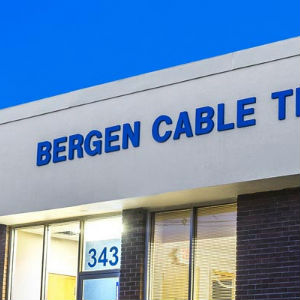 Bergen Cable preformed wire rope and its five main benefits
Bergen Cable preformed wire rope and its five main benefits
February 28, 2019 REDWIRE is news you can use from leading suppliers. Powered by FRASERS.
Posted by Bergen Cable Technology, Inc
Mfr Mechanical Cable, Cable Assemblies & Push-Pull Controls. Original Mfr Of Safety Cable, A Patented Fastener Reten... Read more
Subscribe
Free REDWIRE e-newsletter

Preformed wire rope offers its own unique advantages, according to Bergen Cable.
For North America’s best selection of cable and wire-rope solutions, the name to trust is Bergen Cable. For more than 75 years, businesses have relied on this supplier, not just for cable products, but for such alternatives as preformed wire rope, which offers unique advantages.
What makes preformed wire rope different from standard rope is that the strands and individual wires in them are preformed to a specified shape before assembly into a finished product.
Salvage value of broken rope
Users sometimes refer to cable and wire rope as if the terms were synonymous, but the difference is that wire rope has diameters larger than 3/8 of an inch, while ropes with smaller diameters are called cables or cords. The preforming process on wire rope eliminates the natural tendency of wires and strands to straighten, so they keep their proper positions.
Bergen Cable notes five distinct advantages of using wire rope that has been preformed. First, users can cut this rope without the seizings that are needed to retain the structure of standard wire rope. Second, the broken rope ends do not untwist, unlike the ends of standard ropes. This characteristic raises the salvage value of broken ropes.
Next, preformed wire rope is substantially free from liveliness and twisting tendencies, which simplifies installation and handling while reducing the likelihood of damage to the rope from kinking or fouling. Preforming enables more general use of Lang lay and wire core constructions. Fourth, removing internal stresses improves resistance to fatigue from bending, which increases service in applications that require an ability to withstand bending. It also allows the use of ropes with larger outer wires when the user wants higher wear resistance.
Last, outer wires wear thinner before they break, and broken wire ends do not protrude from rope to injure the user’s hands, nick and distort adjacent wires, or wear sheaves and drums. Since broken ends do not porcupine, they are not as conspicuous as those of standard ropes. So greater care is necessary during inspection of worn preformed ropes to determine their true condition.
For more information, contact Bergen Cable.
Share
Posted by Bergen Cable Technology, Inc
Mfr Mechanical Cable, Cable Assemblies & Push-Pull Controls. Original Mfr Of Safety Cable, A Patented Fastener Reten... Read more
